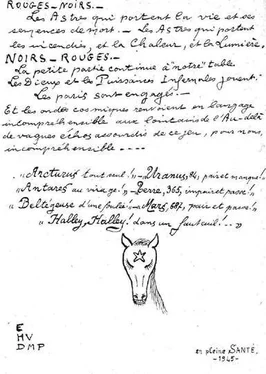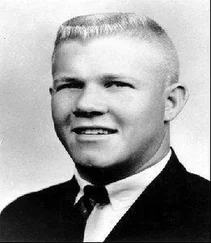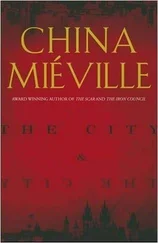Lafont’s real break came that same summer when he succeeded in infiltrating a Resistance cell that had eluded the Abwehr for six months. With the help of his underworld contacts, Lafont found the group’s leader, a Belgian named Lambrecht, in Bordeaux, in a matter of days. Then, too, with his underworld methods, including a propensity to crack a whip in a man’s face and repeat “you will talk” in his surprisingly falsetto voice, Lafont managed to learn the names of the entire organization. The Germans then arrested some six hundred Resistance fighters in Paris as well as in Brussels, Amsterdam, Berlin, and other parts of the continent.
The leader of the Abwehr in France, Colonel Friedrich Rudolph, an old-fashioned Prussian officer and First World War veteran, was impressed with the resourceful new hire, though he was also appalled by his vicious methods. The German leader agreed to continue employing Lafont “on condition that he does not have to see him.” The Abwehr headquarters in Berlin cabled congratulations to the Paris office for its success, and Lafont’s supervisors hosted a celebration in his honor, culminating with a visit to the brothel One Two Two.
The Abwehr had found Lafont useful indeed. In August 1940, with the approval of a high-ranking Abwehr officer, Captain Wilhelm Radecke, Lafont had been allowed into Fresnes prison to recruit criminals for the expansion of his gang. One of the first of the twenty-seven men Lafont handpicked was Alexandre Villaplane, the captain of the French national soccer team that won the first World Cup in 1930, defeating Mexico 4–1. Villaplane had fallen on hard times in the Depression and resorted to rigging horse races. Another man he selected was Adrien the Basque, whose Sulka shirts he now identified.
The most famous member of the gang was Pierre Bonny, a former police detective who had once been praised as the most talented policeman in the country. This was, of course, an exaggeration. In 1935, one year after helping solve the notorious Stavisky Affair, a financial scandal that nearly caused the collapse of the republic, Bonny’s own police career ended in a charge of corruption and a three-year prison sentence. After his release, Bonny scraped by operating a fledgling private detective agency that mainly shadowed unfaithful spouses. A short, wiry man with a dark mustache, Bonny brought a rigor and meticulousness, not to mention an administrative skill, to Lafont’s gang when he joined in 1942.
During this time, Lafont became a naturalized German citizen and also joined the SS, thereby switching his allegiance from the Abwehr to new patrons in the Gestapo. Lafont continued soliciting tips, following up on denunciations, tracking down hidden gold and currency supplies, and infiltrating Resistance groups. As the Allied bombing raids increased in 1943, Lafont would also hunt downed parachutists, airmen, and arms caches. No one knows how many people Lafont’s gang tortured and killed, or how much profit was earned from these activities. Lafont’s power would grow beyond his wildest imagination.
By May 1941, Lafont’s gang had moved from old headquarters on avenue Pierre-1er-de-Serbie to 93 rue Lauriston. At his highly sought after Saturday night dinners here, elite Nazi officials, SS men, industrialists, press barons, artists, film stars, and high-society women and men gathered over the finest delicacies available in Occupied Paris. In the cellars below, meanwhile, French Resistants and other enemies of the Third Reich were brutally tortured.
There were many questions that Massu would have liked to ask Lafont. For one thing, one of Adrien the Basque’s brothers, Emile Estébétéguy, and a member of the gang had claimed that Lafont had decided to punish Adrien by sending him to Marcel Petiot, knowing that the “escape agency” was actually a death factory. Was this possibly true, and if so, was there a connection between Lafont and Petiot? At the moment, Massu could not simply confront the gangster. As German police number 10 474R, Lafont was untouchable.
A PROMISING new lead about other possible Petiot victims, meanwhile, came from an anonymous letter of late March 1944 to Massu’s office. It described a family of Jewish refugees from the Netherlands who arrived in Paris in September 1942, only to attempt to leave a couple of months later with the help of a physician who promised them passage to South America.
There was nothing in this letter, Massu acknowledged, that could not have been fabricated based on information published in the newspapers. But the details had a ring of authenticity. The doctor had emphasized precaution and vigilance: not speaking to anyone about the organization, reliance on last-minute calls supplying details of the rendezvous, and of course, the careful instructions to bring along personal valuables in two suitcases.
The author had only referred to the victims by their initials and age: Madame W (about age sixty-three), her son Maurice W (about thirty-six), and his wife L.W. (about forty-six). Wanting to pursue this lead further, the commissaire released the information to the newspapers, asking for anyone with knowledge of the letter to contact him. He promised to protect the identity of the letter writer.
A few days later, a woman walked into his office claiming to be the sender. Given her knowledge of the letter’s contents, which had been closely guarded, Massu was convinced that he had the right person. Her name was Ilse Gang. She now provided the police with additional details of the missing family. “Madame W” was Rachel Wolff (born Rachel Marx), sixty-year-old widow of Salomon, or Sally, Wolff, once owner of the lumber company Incona C.V. Her son, “Maurice W,” was thirty-six-year-old Moses Maurice Israel Wolff, and L.W. was his wife, Lina Braun Wolff, a forty-seven-year-old divorcée from Breslau with a son by her first marriage in Tel Aviv. Lina was one of Gang’s oldest friends. Originally living in Königsberg, Germany, the Wolff family had fled to Paris when Adolf Hitler had come to power. In 1936, they had moved again, to Amsterdam.
But Amsterdam had not proved the safe haven it had historically been. After the Nazis conquered the Netherlands in the spring of 1940 and tightened their grip with racial laws in June 1942, German occupying authorities had proceeded to wage a campaign of terror against the Dutch Jewish community. The concentration of Jews in Amsterdam, coupled with the relative lack of hiding places, made the Nazi house raids, roundups, and ultimately the deportation of Jewish men, women, and children to extermination camps the worst in Western Europe. Seventy-eight percent of the 140,000 Jews in the Netherlands would be deported, compared, for example, to twenty-five percent in France.
As for the Wolffs, their family business had been seized by the Nazis. They sold what remained of their onetime wealth at a fraction of its value and, in July 1942, fled for their lives.
To escape Nazi detection, they adopted the name Wolters. The family had been helped in their escape, first into Belgium by several people, including a customs official who hid them safely in a convent near Charleville. A lawyer in Rocroi, Maître René Iung, had also assisted them in their flight and overlooked the money they carried (about 300,000 francs), which, being illegal in the Nazi-occupied country, was subject to confiscation.
When the Wolff family reached Paris in early September 1942 with their last name again changed, this time to Walbert or Valbert, they moved into the Hôtel Helvetia on rue Tourneux. They stayed a few days before moving on to the Hôtel du Danube on rue Jacob in the Latin Quarter. They would soon move again because, in October 1942, German authorities seized this building as well.
Gang had looked without success for a more stable apartment for the family. Eventually her friend, Dr. Rachel Gingold, a Romanian dentist at 21 rue Cambon, suggested that she contact one of her patients, a Romanian-born Jewish woman who would soon command much attention from the police, the press, and the public. This was Rudolphina Kahan, or “Eryane,” a cosmopolitan woman with dyed strawberry blond hair, who spoke a handful of languages, including Italian, German, French, and Romanian and, as one journalist put it, looked like “a spy on the Orient Express.” Finding this woman seemed a lucky break.
Читать дальше












